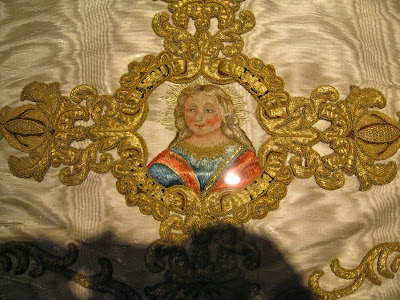By the time we were on the west coast my knitting had grown much longer.
And I was working my way through the pile of stowed books. They included a few about and by Emily Carr because this was the country she traveled through and worked in.
Kerry Mason Dodd's book 'Sunlight in the Shadows. The Landscape of Emily Carr' is full of photographs of places Emily visited. It gave us clues as to where Emily visited and we were able to stop at a few of those places.
Emily Carr, Indian Church', 1927, oil on canvas, 108.6 x 68.9cm. Art Gallery fo Ontario.
photographed from Sharyn Rohlfsen Udall's 'Carr, O'Keeffe, Kahlo. Places of their Own.'
Emily Carr did sketches for this painting when she visited Friendly Cove, Nootka Island.
We anchored in Friendly Cove, puttered ashore and went in search of the church. We learnt from the resident warden that particular church burnt down in 1954. The above church was built as a replacement 2 years later on a new site further towards the point. It is now a museum for the local First Nations band's collection of artefacts.
Also in Friendly Cove is the Nootka Light Station.
Emily Carr sketched the light station buildings during a later visit, in 1929.
I found this image in Doris Shadbolt's 'The Sketchbooks of Emily Carr. Seven Journeys.'
Reading about Emily Carr, Georgia O'Keeffe and Frida Khalo, 3 artists with intense connections to nature and long attachments to specific places, helped me during the month at sea to look longer and deeper at the water, land and sky that is home and a source of inspiration for my work. As a result, I have a sketchbook of ideas to work with.














































